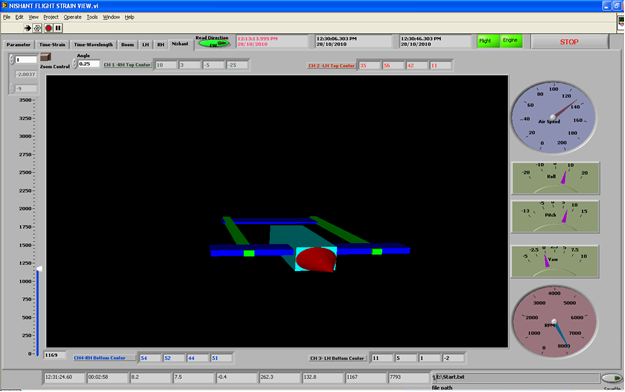SOURCE: AFI


The Pakistan Navy recently conducted a test launch of a new ship-based ballistic missile, reportedly designated as SMASH, with a range of 350 kilometers. This missile is believed to be a Chinese import based on the CM-401 Anti-Ship Ballistic Missile (ASBM) design, according to assessments by IDRW.org and Indian Open Source Intelligence (OSINT) networks. This test highlights Pakistan’s strategy of leveraging Chinese technology to enhance its maritime strike capabilities against larger naval targets.
The SMASH missile, internally referred to as P-282, shares remarkable similarities with the Chinese-developed CM-401 ASBM. Originally designed by China to engage large and medium-sized ships, fleets, and harbor-based targets, the CM-401 represents a formidable addition to modern naval arsenals due to its advanced trajectory and striking power. Pakistan’s acquisition of this ASBM variant enables it to target high-value naval assets with precision and formidable speed.
Continue readingSOURCE: AFI


India’s longstanding reliance on Russian-made MiG fighters such as the MiG-21, MiG-23, and MiG-27 played a pivotal role in shaping the Indian Air Force (IAF) through the late 20th century. These jets, initially seen as capable and affordable solutions to bolster India’s air power, ended up affecting the IAF’s squadron strength as they aged faster than anticipated. While the MiG-21 was expected to serve for half a century and remain a backbone of the IAF, the MiG-23 and MiG-27 had to be prematurely retired due to critical design flaws and operational limitations, significantly affecting the IAF’s operational readiness.
The MiG-21 was inducted into the IAF in the 1960s and became a mainstay due to its agility, ease of maintenance, and relatively low operating costs. The IAF gradually expanded its MiG-21 fleet, and the aircraft saw considerable combat action over the years. Initially, the MiG-21 met the IAF’s expectations, performing admirably in close-range dogfights and holding its ground in regional conflicts. India hoped to sustain this platform through periodic upgrades, including the MiG-21 Bison variant, which incorporated modern avionics and weapon systems.
Continue readingSOURCE: IDRW.ORG.


The Indian Air Force (IAF) has taken a significant step toward preserving its aviation heritage by initiating the revival of two MiG-23UB trainer aircraft. Through its Headquarters Maintenance Command (HQ MC), the IAF has issued an Expression of Interest (EoI) inviting qualified Indian firms to participate in the restoration and maintenance of these historic aircraft. The selected firms must have the technical expertise, financial stability, infrastructure, and experience required to make these MiG-23UB trainers flyworthy once again, and to support their long-term upkeep as part of the IAF’s Heritage Flight.
The MiG-23, an iconic swing-wing fighter developed by the Soviet Union, served in the IAF from the early 1980s and played a crucial role in bolstering the force’s air superiority capabilities. Known for its powerful performance in high-speed intercepts, the MiG-23 fleet included variants like the MiG-23MF, MiG-23BN, and the MiG-23UB, which was specifically designed as a two-seat trainer for pilot training and specialized missions. The MiG-23MF variant was retired in March 2007, followed by the MiG-23BN ground-attack variant in March 2011. However, a limited number of MiG-23UB trainers continued to operate for specialized roles within the IAF, maintaining a connection to the aircraft’s rich legacy within the service.
Continue readingSOURCE: IDRW.ORG.


The Technology Development Fund (TDF) has issued a call to Indian Micro, Small, and Medium Enterprises (MSMEs) to develop a Fiber Bragg Grating (FBG)-based Structural Health Monitoring (SHM) system. The aim of this initiative is to enhance the structural integrity of various vehicles and systems by continuously monitoring their health throughout their operational lifespan, ensuring both safety and economic efficiency.
Structural Health Monitoring (SHM) systems are designed to monitor the health of a structure, ensuring its static strength, durability, and damage tolerance during its specified usage period. The primary goal of SHM is to prevent unexpected structural failures, which can pose safety risks and lead to expensive repairs. By having structures equipped with SHM systems, maintenance teams can receive real-time data on the overall health of the structure based on information gathered from built-in sensors and analyzed by SHM algorithms.
Continue readingSOURCE: AFI


In recent years, the Pakistan Air Force (PAF) has made impressive strides in modernizing its fleet, especially in the procurement of fighter jets and Airborne Warning and Control System (AWACS) aircraft. This progress is notable given Pakistan’s challenging economic landscape, with issues like rising inflation, significant national debt, and dependency on foreign loans.
In contrast, the Indian Air Force (IAF), operating within a nation with a growing economy and a significantly larger defense budget, has faced procurement delays. Despite India’s financial advantages, red tape and systemic inefficiencies have slowed the pace of critical acquisitions. Here, we explore the factors behind Pakistan’s swift procurement and the reasons for India’s relatively sluggish acquisition process.
Continue readingSOURCE: AFI


The Defence Research and Development Laboratory (DRDL), a key division of India’s Defence Research and Development Organisation (DRDO), has successfully developed Electronic Support Measures (ESM) modules for the Indian Navy’s Do-228 aircraft under the ambitious Project SHYEN S-22. This indigenous development marks a significant milestone in enhancing India’s electronic warfare (EW) capabilities and strengthening the Navy’s surveillance and reconnaissance abilities in maritime operations.
Project SHYEN S-22 was initiated to develop indigenous ESM capabilities tailored to meet the Indian Navy’s specific operational requirements. Electronic Support Measures play a critical role in modern warfare, allowing military forces to detect, identify, and locate potential threats by intercepting and analyzing electromagnetic signals emitted by adversaries. By developing these ESM modules indigenously, DRDO not only enhances the Navy’s operational capabilities but also reinforces India’s strategic goal of reducing dependence on foreign technology for critical defense systems.
Continue readingSOURCE: AFI


In a recent turn of events, Pakistan has reportedly approached Russia for the S-350 Vityaz air defense system after its earlier request for the advanced S-400 system was declined. The refusal stems from Russia’s strategic decision to avoid supplying the same defense capabilities to nations with complex geopolitical relations, as the S-400 is already operational within India’s defense infrastructure. This approach is indicative of Russia’s efforts to balance its defense partnerships in South Asia without intensifying the arms race between India and Pakistan.
The S-350 Vityaz, although not as advanced as the S-400, is still a capable medium-to-long-range surface-to-air missile (SAM) system with a range of up to 120 kilometers. It has the ability to track and engage multiple targets, including ballistic and cruise missiles, as well as various types of aircraft. The S-350 would represent a significant upgrade to Pakistan’s existing air defense capabilities, providing a reliable mid-range solution to address aerial threats.
Continue readingSOURCE: AFI


VEDA Aeronautics has revealed an upgraded design for its advanced Fire Control System (FCS) developed specifically for integration with the MK47 40mm grenade launcher. This upgrade reflects VEDA’s commitment to equipping tactical combat units with cutting-edge targeting and precision-firing capabilities. Known for its versatility, the MK47 is a portable grenade weapon system manufactured by General Dynamics and widely recognized for its suitability in mobile, tactical combat operations.
The new FCS from VEDA Aeronautics incorporates state-of-the-art sensing, targeting, and computer programming technologies. These enhancements are aimed at significantly boosting the precision, effectiveness, and speed of the MK47’s firing capabilities.
Continue readingSOURCE: AFI


In recent developments, pro-Khalistani groups in Canada have established a joint lobbying organization named Sikh Federation Canada. The primary aim of this organization is to centralize efforts to lobby and influence Canadian political circles, specifically by aligning with Canadian politicians who share their viewpoints or are sympathetic to their causes. This move highlights a concerning shift toward coordinated political activism among pro-Khalistani groups within Canada, which has potential implications for Canada-India relations and for domestic stability within Canada.
The Sikh Federation Canada is reportedly formed to unite various Khalistani groups under a common banner, allowing them to better organize and direct their efforts within Canada’s political landscape. This federation seeks to leverage the diversity and influence of Canada’s Sikh community, aligning with like-minded politicians and public officials who may support their agenda, including discussions around “self-determination” for Punjab, India, and issues around Sikh identity and religious rights.
Continue readingSOURCE: RAUNAK KUNDE / NEWS BEAT / IDRW.ORG


Russia’s Rosoboronexport has proposed its Su-35 multi-role fighter for the Indian Air Force’s (IAF) ambitious Multi-Role Fighter Aircraft (MRFA) program, which aims to procure 114 advanced fighters. According to Rosoboronexport officials, the company has ramped up Su-35 production to double-digit levels, despite the ongoing war, and is prepared to deliver the required quantity to India should the Su-35 be selected.
The Su-35, an advanced and highly manoeuvrable multirole fighter, boasts a range of capabilities that align with IAF requirements for air superiority and ground attack roles. Equipped with an upgraded AL-41F engine—an advanced iteration of the AL-31F used in India’s existing Su-30MKI fleet—the Su-35 promises both ease of transition for IAF pilots and significant performance enhancements.
Continue readingSOURCE: RAUNAK KUNDE / NEWS BEAT / IDRW.ORG


The Indian Army is set to begin trials for the much-anticipated Mounted Gun Systems (MGS), with three contenders from India’s defence industry preparing to showcase their artillery solutions. The Army’s requirement for around 300 units of MGS has prompted significant competition between DRDO-Kalyani, Tata Advanced Systems Limited (TASL), and Advanced Weapons and Equipment India Limited (AWEIL).
DRDO, in collaboration with Kalyani Group, has developed a 155mm/52 calibre Mounted Artillery Gun System (MGS), which is already undergoing company trials. Mounted on a BEML-developed Tatra 8×8 chassis, the DRDO-Kalyani MGS is designed for high mobility, allowing the rapid deployment of artillery firepower in diverse terrains.
Continue readingSOURCE: RAUNAK KUNDE / NEWS BEAT / IDRW.ORG


The Aeronautical Development Establishment (ADE) is developing a cutting-edge Digital Flight Control Computer (DFCC) for India’s 5th generation Advanced Medium Combat Aircraft (AMCA) fighter jet program. This next-gen DFCC will feature a core processor offering nearly 25 times the computing power of the DFCCs seen on the Tejas Mk1A and the upcoming Tejas MkII aircraft.
In a modern fighter jet, the DFCC plays a crucial role in managing flight control systems and ensuring the aircraft’s stability, manoeuvrability, and overall performance. It acts as the brain behind the aircraft’s flight control operations, processing data from sensors and input devices and sending real-time commands to the aircraft’s control surfaces, engines, and avionics.
Continue readingSOURCE: AFI


The highly anticipated Russian Su-57 stealth fighter has arrived at the Zhuhai Airshow 2024, showcasing its advanced capabilities on the international stage. In a much-anticipated move, legendary test pilot Sergey Bogdan, renowned for his exceptional skill and contributions to the Su-57 program, is slated to pilot the aircraft during the airshow. The Su-57, Russia’s premier fifth-generation fighter, is set to demonstrate its agility and advanced technology to the global audience, generating considerable excitement among defense enthusiasts and aviation experts.
The Su-57, also known as “Felon” by NATO, is Russia’s answer to modern aerial combat demands, built to rival platforms like the American F-22 and F-35. Developed by Sukhoi, the Su-57 integrates stealth, super-maneuverability, and advanced avionics in a single platform, making it a formidable player in the realm of fifth-generation fighters. The Zhuhai Airshow provides a unique opportunity for Russia to display the Su-57’s capabilities, especially as global interest in advanced combat aircraft surges.
Continue readingSOURCE: AFI


In a recent development, the Royal Moroccan Armed Forces (RMAF) officially confirmed that the Indian WhAP 8×8 Armored Fighting Vehicle (AFV) outperformed the Chinese Type-08 during a series of rigorous trials. According to information from the Atlantic Observatory, these tests were part of Morocco’s international tender process, aimed at selecting a reliable 8×8 AFV for the RMAF, with the stipulation that any selected vehicle must come with the ability to transfer technology and establish a local production line in Morocco. In a highly competitive trial, India’s WhAP 8×8 AFV emerged as the superior choice.
The trials, which began with the WhAP 8×8’s arrival in Morocco in 2022, lasted over four months. The vehicles underwent extensive testing across varied terrains, including mountainous and hard-to-reach areas that were especially challenging. The WhAP, designed by Tata Advanced Systems in collaboration with the Defence Research and Development Organisation (DRDO) of India, met and exceeded RMAF’s performance benchmarks. In contrast, the Chinese Type-08, developed by NORINCO (also known as 08-ZBL), struggled during these tests, encountering technical issues that ultimately contributed to its elimination from consideration.
Continue readingSOURCE: AFI


India is on the verge of a historic achievement with the near-completion of the nation’s highest airfield at Mudh-Nyoma in Eastern Ladakh, perched at a staggering 13,700 feet above sea level. Situated close to the Line of Actual Control (LAC), this airfield is not only a marvel of high-altitude engineering but also a strategic asset poised to bolster India’s defense capabilities and regional connectivity.
The Mudh-Nyoma airfield, with its 3-kilometer-long runway, is designed to support emergency military operations and rapidly deploy resources as needed. In recent years, the heightened tensions along the LAC have underscored the importance of robust infrastructure for quick response and sustained operations. The airfield’s high altitude and proximity to the LAC make it a game-changer, providing the Indian Armed Forces with greater operational flexibility and a secure launch point for surveillance and defense missions.
Continue reading